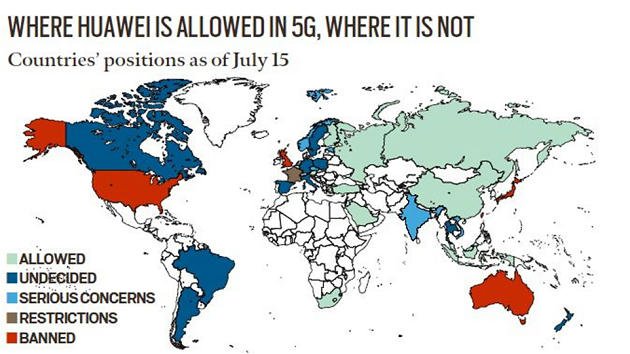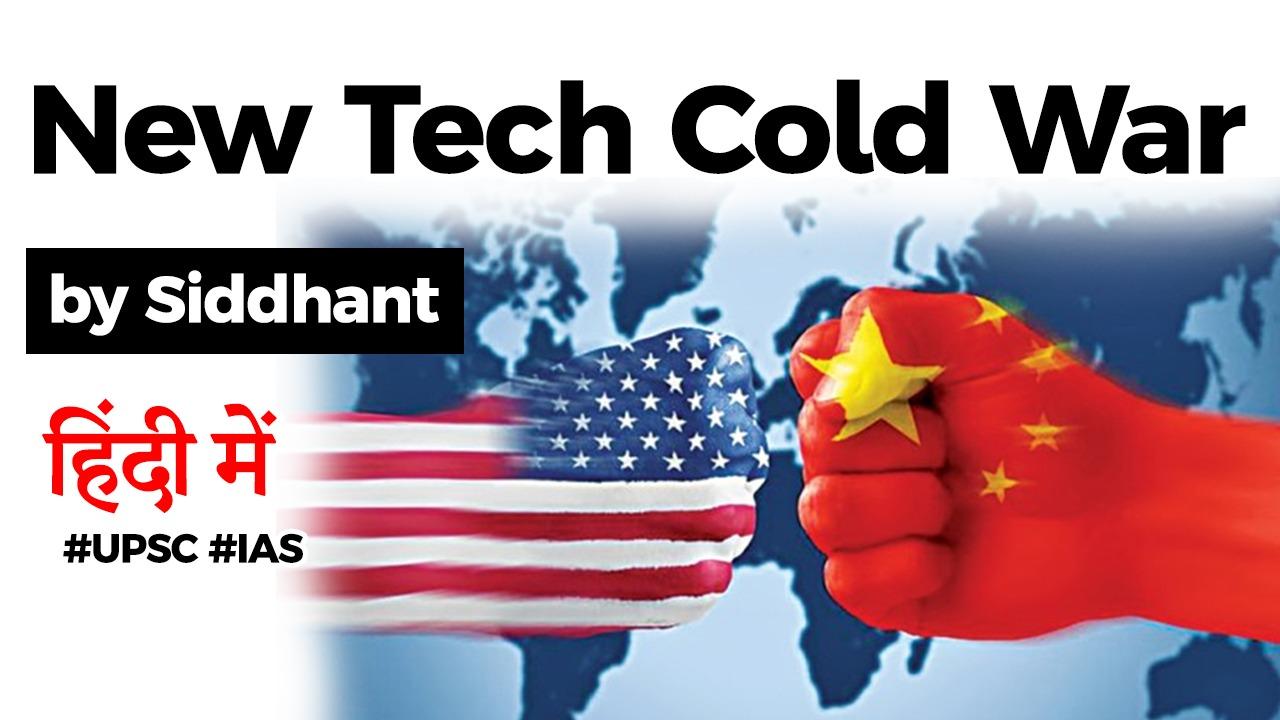Table of Contents
COLD WAR
- What began as a report by the US House Intelligence Committee flagging issues posed by Chinese telecom companies Huawei Technologies and ZTE nearly a decade ago has evolved into a full-scale duel between the two global technology powerhouses, which now threatens to draw in the entire world.
- While China has traditionally resisted allowing American big-data companies such as Facebook and Google to operate within its jurisdiction, there have still been significant dealings between the two countries on the technology side until now. Last year, Apple recorded $100 million of daily sales in China, while Huawei Technologies reported record revenues primarily from its exposure in western markets, including the US.
 COLD WAR
COLD WAR
- A subsequent move by the UK to reverse an earlier decision and block Huawei from its 5G networks aligns with the US view — and marks an escalation of the Sino-American tech slugfest to beyond just these two countries.
- A new set of US restrictions imposed on the use of chipmaking tools in May means Huawei could face shortages in its supply of specialist chips
- This could have a bearing on the growing competition to dominate next-generation technologies such as 5G networks and artificial intelligence, and impact the plans of most countries preparing to transition to a 5G regime, including India.
How did the Chinese come to dominate the high-end hardware market?
- Started in the late 1980s by a former Deputy Regimental Chief in the People’s Liberation Army, Huawei has come a long way from being a reseller of PBX switches imported from Hong Kong.
- It overtook Apple as the world’s second-largest manufacturer of smartphones in 2018, and had an annual revenue of $122 billion and some 194,000 employees last year.
How could action against hardware makers develop into a tech cold war?
- In February 2011, Huawei published an open letter to the US government denying the security concerns raised about the company or its equipment, and requesting a full investigation into its corporate operations. In response, the House Permanent Select Committee on Intelligence began an investigation in November 2011 into “the counterintelligence and security threat posed by Chinese telecommunications companies doing business in the US”.
- In its report submitted in 2012, the House panel noted that “Huawei and ZTE cannot be trusted to be free of foreign state influence and thus pose a security threat to the United States”. Last month, the US Federal Communications Commission designated the two companies as national security threats.
How could action against hardware makers develop into a tech cold war?
- Most observers see this as a ‘technological cold war’ that could extend beyond just the US and China, and compel other countries, including India, to effectively choose between one camp and the other.
- It is being described as a geopolitical struggle over technology that threatens to divide the world into two distinct technological blocs, with both countries striving to limit the other’s access to its advanced know-how.
Where does India stand in this battle?
- Back in December 2009, the Department of Telecommunications (DoT) had asked Indian mobile companies to suspend deals with Chinese equipment makers after fears that Chinese equipment were being used for hacking and spying.
- After the standoff in Ladakh, however, India has asked state-owned telecom service providers to exclude Chinese companies from the scope of their network upgrade contracts; this was part of the wider decision to signal curbs on Chinese investments and tech companies in the country. In official statements, India justified the ban on 59 mobile apps with Chinese links on grounds of a threat to national security.
Where does India stand in this battle?
- India’s hesitation in acting against Chinese equipment makers in the telecom industry has derived from the view that the Chinese have brought in a semblance of competitiveness to a market earlier dominated by pricier European firms such as Nokia and Ericsson — however, the border clashes and the US action could now force New Delhi into the anti-China camp.
Latest Burning Issues | Free PDF






















 WhatsApp
WhatsApp